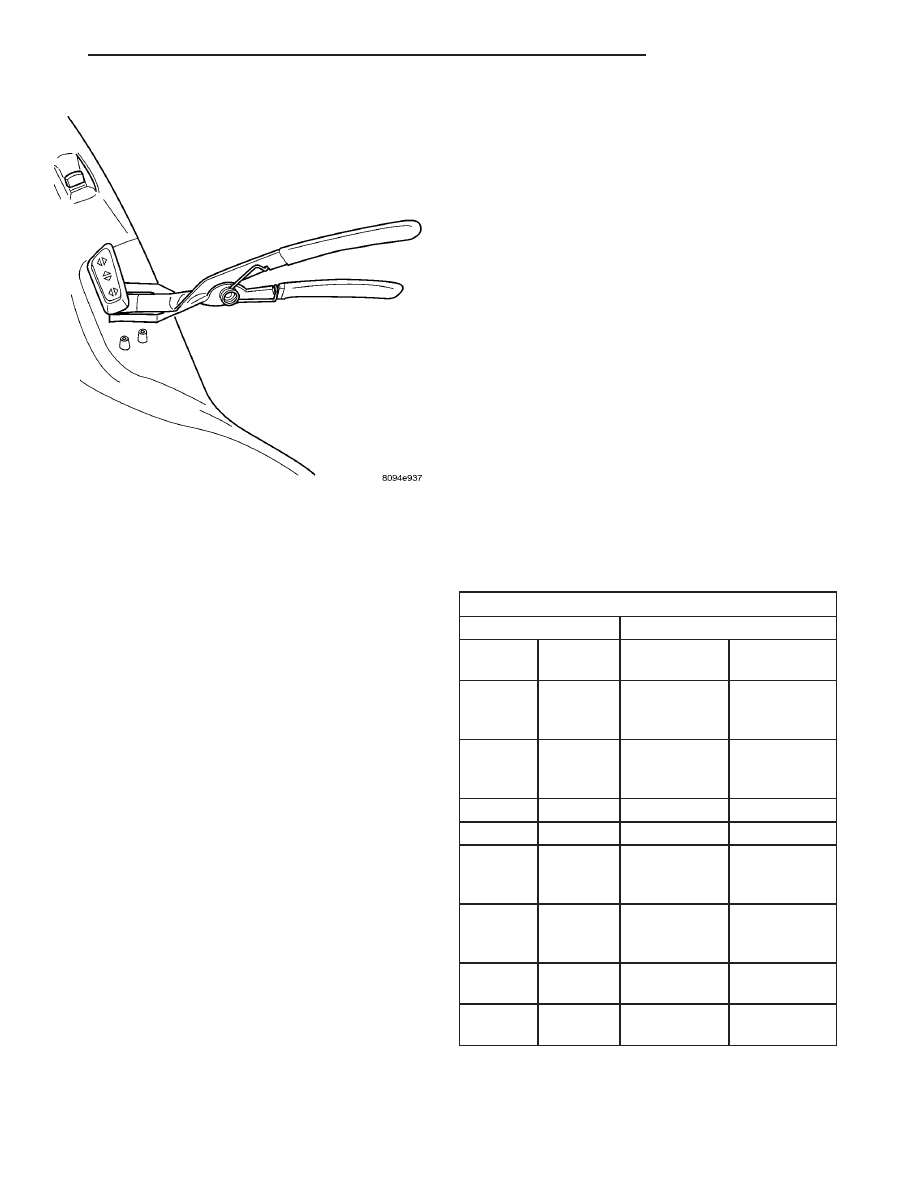Chrysler 300M, Dodge Interpid. Manual - part 104

POWER SEAT TRACK
DESCRIPTION
The eight/four-way power seat options include a
single electrically operated power seat track located
under each front bucket seat. The power seat track
unit replaces the standard equipment manual seat
tracks. The lower half of the power seat track is
secured at the front with two bolts to the floor panel
seat cross member, and at the rear with two bolts to
the floor panel. Four nuts secure the bottom of the
seat cushion frame to four studs on the upper half of
the power seat track unit.
The power seat track unit cannot be repaired, and
is serviced only as a complete unit. If any component
in this unit is faulty or damaged, the entire power
seat track unit must be replaced.
OPERATION
The power seat track unit includes two/three
reversible electric motors that are secured to the
upper half of the track unit. Each motor moves the
seat adjuster through a combination of worm-drive
gearboxes and screw-type drive units. Each of the
driver side power seat track motors used on models
equipped with the optional memory system, also has
a position potentiometer integral to the motor assem-
bly, which electronically monitors the motor position.
The front and rear (if equipped) of the seat are
operated by two separate vertical adjustment motors.
These motors can be operated independently of each
other, tilting the entire seat assembly forward or
rearward; or, they can be operated in unison by
selecting the proper power seat switch functions,
which will raise or lower the entire seat assembly.
The third motor is the horizontal adjustment motor,
which moves the seat track in the forward and rear-
ward directions.
DIAGNOSIS AND TESTING - POWER SEAT
TRACK
(1) Remove power seat switch from seat. Refer to
the procedure in this section.
(2) Disconnect wire harness connector.
(3) Check Pin 1 for battery voltage and Pin 5 for
ground.
(4)
To test the seat motors and verify proper seat
responses, refer to (Fig. 9) and the Seat Motor Test
table. Using two jumper wires, connect one to a bat-
tery supply and the second to a ground. Connect the
other ends to the seat wire harness connector as
described in the Seat Motor Test table.
SEAT TRACK MOTOR TEST
SEAT CONNECTOR
CONNECT JUMPER
SEAT ACTION
B (+)
B (-)
DRIVER
SIDE
PASSENGER
SIDE
PIN 9
PIN 6
FRONT
RISER UP
FRONT
RISER
DOWN
PIN 6
PIN 9
FRONT
RISER
DOWN
FRONT
RISER UP
PIN 10
PIN 3
FORWARD
FORWARD
PIN 3
PIN 10
REARWARD
REARWARD
PIN 8
PIN 7
REAR
RISER UP
REAR RISER
DOWN (IF
EQUIP.)
PIN 7
PIN 8
REAR
RISER
DOWN
REAR RISER
UP (IF
EQUIP.)
PIN 4
PIN 2
RECLINER
UP
RECLINER
UP
PIN 2
PIN 4
RECLINER
DOWN
RECLINER
DOWN
Fig. 8 Removing Switch Control Knobs - Typical
LH
POWER SEATS
8N - 19
PASSENGER POWER SEAT SWITCH (Continued)